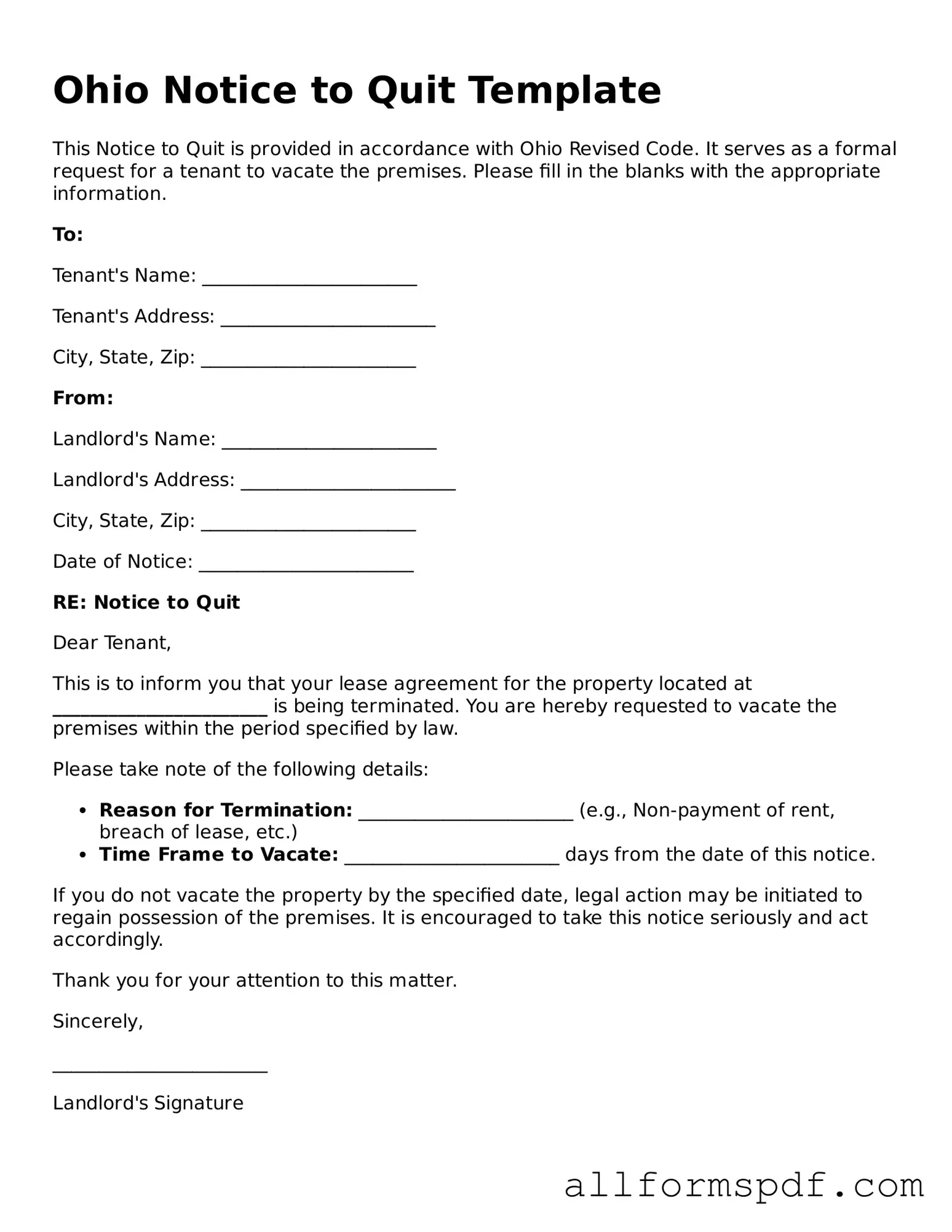Filling out the Ohio Notice to Quit form can be a daunting task, and many people make mistakes that can lead to complications later on. One common error is failing to include the correct date. It is essential to clearly indicate when the notice is being served. Omitting the date or writing it incorrectly can create confusion and potentially invalidate the notice.
Another frequent mistake is not providing sufficient details about the tenant. The form requires the full name of the tenant, and any errors in spelling or missing information can result in legal issues. It is crucial to double-check the tenant's name against any lease agreements or rental documents to ensure accuracy.
Many individuals also overlook the necessity of specifying the reason for the notice. Whether it is for non-payment of rent or lease violations, clarity is vital. Simply stating “quit” without elaboration can lead to misunderstandings and could complicate the eviction process.
In addition, some people forget to sign and date the form. This step is not just a formality; it is a legal requirement. A Notice to Quit that is not signed may be deemed invalid, causing delays in the eviction process.
Another common error is using the wrong delivery method. The Ohio law outlines specific ways to serve a Notice to Quit, including personal delivery or certified mail. Failing to follow these guidelines can render the notice ineffective, leaving landlords unable to proceed with eviction.
People often neglect to keep a copy of the completed Notice to Quit for their records. This oversight can be problematic if disputes arise later. Having a copy ensures that all parties involved have access to the same information, which can be crucial in legal proceedings.
Lastly, many individuals do not seek legal advice when necessary. While the form may seem straightforward, nuances in the law can significantly affect the outcome. Consulting with a legal professional can provide clarity and help avoid pitfalls that could arise from improper completion of the form.
